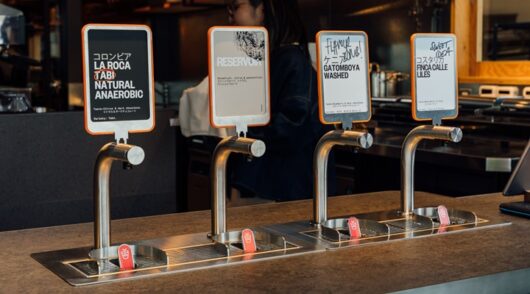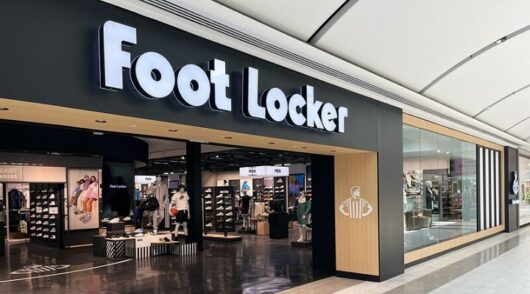The era of combative relationships between retailers and landlords has passed according to experienced retail property specialist Elizabeth Corr. The future should be about collaboration, especially in an era where online is taking a growing share of total retail sales, she says.
Corr is the founder and principal of Retail Network Strategies which is redefining the approach to developing retail store networks, by working with landlords and store owners to develop a collaborative approach to lease negotiations aiming to put the consumer first, to the benefit of all parties.
With retailers “at the coalface” when it comes to understanding consumer purchasing behaviour – both online and offline – the data they are aggregating can help landlords strategise the development of their properties.
“If we treat landlords as business partners and bring them along on that journey – we can start developing their understanding of our businesses and get them to buy into what we are doing. When they believe in you as a retailer, then we can minimise the conflict.
“Traditionally we have passed off landlord conflict as just par for the course because we see our agendas as competing with each other. But if we align our agendas, we can make that process a whole lot easier. I’m not saying that we’re never going to have a debate or conflicts, but we’re certainly going to be able to mitigate the conflicts that we’re currently having,” she explains to Inside Retail.
Retail Network Strategies partners with retailers to develop their property network strategies through a highly analytical approach to maximise profitability and market positioning within the network and further expand the business. Using this strategic plan, the company leads the landlord engagement and lease negotiation process to deliver the strategic objectives of the business – whether that be repositioning the network, closing or relocating stores, or expanding the network.
With more than a decade’s experience in retail leasing, including time with Zara, David Jones and JLL, Corr is an expert in retail tenant advisory services, store network strategy and retail leasing. Having worked on both ‘sides’ of the tenant and landlord relationship she is well placed to identify trends in the post-Covid era of retail real estate where changing consumer behaviour is providing challenges for all.
Take click-and-collect, for example, where many retailers are now trying to fulfil online orders from existing stores, offering convenience to shoppers and potentially bringing more consumers into shopping malls or high street retail strips.
“I think the market has been a bit slow off the mark in recognising the benefits. We used to be happy to pay our rent because the landlords were investing heavily to bring our customers to the shopping centre so it was their responsibility to bring a customer to the centre and our responsibility as retailers to make the sale,” she reflects.
“But what happens when retailers are investing so heavily in their online business? We know that those investments are bringing customers into the shopping centre but how is that value being recognised in our rental deals? I don’t think we have really seen that yet and I doubt we will until we start to engage with our landlords differently on more of a business partner level as opposed to treating them like adversaries.”
The growing omnichannel approach of retailers is pushing some to look at how they use their retail store footprint more efficiently to deliver click-and-collect convenience and even fulfil e-commerce orders from stores rather than distant warehouses.
“I’ve seen in previous roles a lot of retailers trying to fit click-and-collect into their existing footprint. The easiest thing to do is add more space to a store, but that’s also the most expensive,” says Corr. “So we’ve got some retailers trying to revisit their supply chain and how they can improve the frequency of delivery and deliver less per visit to deal with the natural turnover of stock rather than treating the stores like warehouses, and I think that’s the right answer, although it is not easy.”
Why retailers are reassessing their footprints and their network size
Corr says a lot of retailers are reassessing their physical footprints in the post-Covid era which has seen a lot of consumers continue to shop online having picked up the habit during lockdowns, but also a renaissance of in-store shopping.
“Now that we’ve been trading, with a really heightened online business for the last three years, retailers have got a whole new set of data to understand the value of their e-commerce customers to their brick-and-mortar networks. It is becoming really clear that with so much focus on e-commerce, everyone is playing a little bit of catch-up in terms of their store network and they are starting to work out how the two really interact together.”
Consequently, retailers are now reassessing whether their current physical store network is at the right size, how many stores they really need to suit the current trading environment, and where can they reposition their current portfolio before they focus on future growth, she says.
“So there’s one set of retailers that are really conservative in studying the data and making sure they get things right [ensuring] that they are flexible to deal with the changing environment. And then there’s another set who are off to the races, expanding as quickly as they can based on their heightened demand in the market. However, it is important that retailers strike the right balance between growth and risk.”
During Covid, categories like homewares, home furnishings and athleisure traded very well so the brands in that space were expanding quite strongly, but that growth has tapered off during the past couple of months.
Corr says she is noticing some retailers chasing volume and wanting to get mass-market exposure. “The more powerful ones are repositioning and making sure that they’re doing the right deals and getting the right footprint from the get-go. From talking with landlords, I know they are seeing more competition for space than they were before and while that may have come off slightly during the past month or two, there was really a flurry of activity earlier this year.
“Retailers competing for space and driving rents up is a bit of a challenge in both shopping centres and high streets.”
Asked who had the most power in the leasing market right now – landlords or tenants – she chose a third party.
“The customer, absolutely. I would love to say the retailer does and I would hate to say the landlord does. I think it’s a balance: If you’ve got a strong brand and the discipline to operate that business and deal with your real estate needs with a common-sense approach and a really conservative manner, I think you can set up a really strong business. It is the customer who ultimately decides who has the power in that relationship.
“But I don’t think any one party has the power. There are lots of ways you can unlock value through your real estate. That comes through your level of engagement, and from really getting landlords to believe in your business.”






